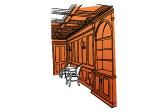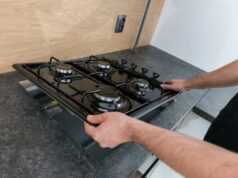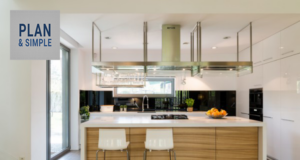
Wood has many uses on internal walls, but is perhaps most commonly used for decorative purposes like mouldings and frames.
What are wood-clad interiors and wood mouldings?
Wood is commonly used around the home to create sturdy, hard-wearing mouldings. For real lovers of wood, entire interior walls can be clad in wood panelling or ornate wooden carvings.

Why is wood used?
Wooden mouldings such as wainscoting, skirting boards and dado rails help to protect paint and plasterboard. Architraves are designed to hide the gaps between walls, windows, and doors. Banisters and the balustrades that hold them up keep you safe from a fall while climbing stairs. Some mouldings are purely aesthetic – mouldings can be used to make ceilings seem lower or make an otherwise plain room interesting. The style of moulding used often evokes a particular theme or period of design. Plastic mouldings are less expensive and can be used in place of wood, but timber is generally preferred – as a natural product, it simply has a better ‘feel’.
Wooden mouldings can be painted, stained, or simply left as they are. Painting your mouldings will hide any number of flaws in both the wood and the workmanship, whereas a stained or naked finish requires higher graded wood. As better quality wood is more expensive, your budget is another consideration. Generally the better grade woods are hardwood, with softwoods being better for painted mouldings. Paint sits better on a tight grained wood as opposed to one with an open grain. And if you live in an area prone to humidity, you should choose a wood that is both resistant to rot and moisture, such as redwood or pine.
How is wood installed?
Most wooden mouldings are strips of timber that are installed by nailing them horizontally across the wall studs. Care should be taken to ensure mouldings are hung level and that they join neatly in the corners of your room. Ceiling mouldings are generally glued into place first and then secured with nails. Wood panelling and wood carvings may also be installed by attaching them to existing plasterboard walls.
Is wood easy to maintain?
Wood that has been selected to suit its role and environment should require minimal maintenance. If desired, timber can be repainted/stained once every few years to keep it looking fresh. Wood has the potential to rot if it is exposed to excessive moisture, and it is also susceptible to white ant infestation. Wood in high traffic areas may become dented. If you find your mouldings have deteriorated for any of these reasons, they can be replaced without too much interruption to your daily life.
|
Advantages
|
Disadvantages
|





